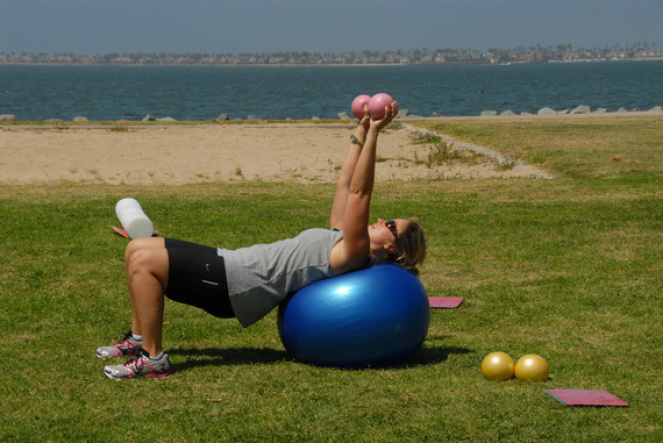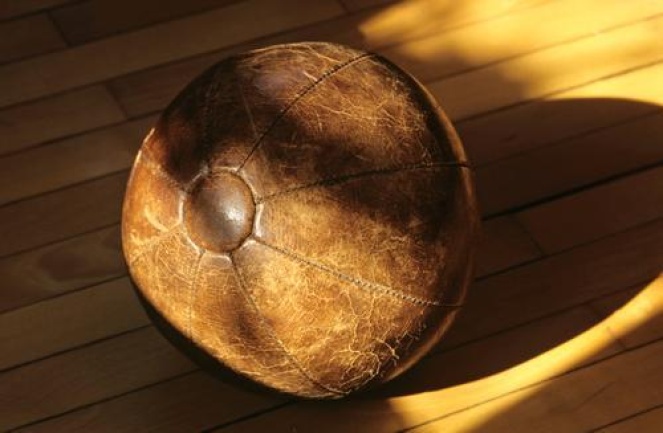DREAM BODIES GYM PHYSICAL SPACE
Here it is !!! the new space, still a little raw and ruff, but the flooring is here and going down now. Stay tuned for more updates !! Dream Bodies Gym is alive
Here it is !!! the new space, still a little raw and ruff, but the flooring is here and going down now. Stay tuned for more updates !! Dream Bodies Gym is alive
1 Smashed Banana, 1/2 Cup Gluten Free Rolled Oats, 2 Tbsp Flax Seed (optional), 2 whole organic eggs, 1 Tsp vanilla, 1 Tsp cinnamon, tiny drizzle unsweetened almond milk. If mixture is to thin you can add oats to texture, and, or skip almond milk all together:)
INGREDIENTS :
1 head of Cauliflower
1/2 Onion-sauteed
1 cup of raw carrots
1 cup of peas
1 cup of cooked chicken
1 teaspoon of coconut oil
1 teaspoon of garlic paste
1 egg
6 tablespoons of Aminos

The Top 4 Reasons to Strength Train as You Age | Ornish Living
The Top 4 Reasons to Strength Train as You Age
Posted: 04/23/2015 6:24 pm EDT Updated: 04/23/2015 6:59 pm EDT
When many people think of exercise, the first thing that comes to mind is aerobic training, such as walking, swimming or cycling. While cardiovascular training is most often associated with better health and longevity, more recent research also evaluates the benefits of strength training beyond the typical result of improving muscle mass.
To maximize your fitness program, strength training should be an equally important partner to aerobic training. This partnership will help these two routines benefit one another, and the end result will be a more balanced approach to fitness with enhanced results.
Here are the top four reasons you should incorporate strength training into your fitness plan.
1. Maintain Muscle Mass and Strength as You Age
As we reach our mid- to late-20s, we begin to slowly lose muscle mass. Most research shows that this rate of muscle loss increases significantly when we enter our 60s. While strength training doesn’t stop muscle loss as we age, it goes a long way in slowing it down to a crawl. Not only will strength training help to maintain muscle mass as we age, it will enhance the rest of your fitness routine. Stronger muscles equal stronger cycling, swimming or running, along with better performance in any activities you do.
2. It Doesn’t Have to Take a Lot of Time
Strength training can be done in a relatively short period of time per session and provide significant benefit. Studies show that only two days per week for 15 to 20 minutes can provide enough muscle stimulation to improve strength and balance in adult men and women. These results don’t require lifting heavy loads that increase the risk of injury or overuse. As long as you exercise the major muscle groups several times per week and challenge yourself more than you’re used, you will see results. You can feel the benefits with only six to 10 exercises.
3. Reduced Rate of Injuries and Fatigue
Our joints play a key role as our bones and muscles work together to support and move us. As we age our joints can become weak, stiff and sore unless we include physical activity. Weak joints are more vulnerable to injury from falls, twists or even picking up the groceries. Muscular weakness is also linked with deficiencies in balance that can lead to injuries related to falls. Strength training will provide significant protection by improving balance and movement in order to support your body if you were to fall, twist or strain a joint. Enhancements in strength will help your endurance in daily activities whether it’s cutting the grass, painting the house, or working in the garden.
4. Counteract the Effects of Weight Loss
To lose weight, we need to create a calorie deficit either by burning calories with exercises, eating fewer calories, or preferably doing both. So as a person loses weight, we often lose muscle mass as well. Our body has a tendency to lose or gain and it can be difficult to do both. Since it is vitally important to maintain muscle mass as we age, we need to balance weight loss, especially losing large amounts of weight quickly, with strength training to maintain muscle. If you have lost weight, especially significant amounts of weight, strength training may help to prevent weakness and also help to reshape your body by adding firm muscles in areas where you have lost weight. We don’t want to lose any muscle mass, even if that means that our weight loss may be slower.
Remember that healthy nutrition and quality sleep are also key components of successful strength training. Healthy nutrition and sleep both aide the body in recovery and growth of muscle tissue, so the better your nutrition and sleep, the better your results from strength training. The healthy and well balanced approach of the Ornish plan allows for effective fitness in both aerobic and strength training.
What motivates you to include strength training in your fitness plan?
This article was originally published on Ornish Living.
Why The Pushup Is The World’s Greatest Exercise
If I could only do one exercise for the rest of my life, it would be the pushup.
Maybe you hate them or you think you can’t complete a single rep or you think being a runner (or a cyclist or a walker) means you only need to focus on your lower body. But it’s time to stop considering the pushup an arm workout and start accepting it for the body-altering, core-strengthening move it truly is. You don’t have to drop and give me 50; simply incorporating more pushups into your regular routine can help you reach all sorts of fitness goals, by helping you improve everything from your posture on your bike to your balance to your arm swing.
The Perfect PushupSo how do you do the move of all moves correctly?

If you’re not quite ready for a pushup, there’s no shame in taking a step back. In fact, I wish more people would give the modified pushup the attention it deserves.


Pushups are hard. That’s why they’re so awesome. But, like any challenging exercise, that means form is paramount. You’re better off doing 10 modified pushups with perfect form than five full pushups with hunched shoulders or a drooping neck or hips. You’ll work the same core, chest and arm muscles while relieving a bit of the pressure, allowing you to train safely. The same rules apply as above; instead, start on hands and knees (and don’t cross the ankles).
In both a modified or full pushup, the wider you place your hands, the more you work your chest.




The closer to your body you place your hands, the more you work your triceps.




Once you’ve mastered the pushup, you can experiment with a whole bunch of variations to not only mix up a tired routine but also to work different muscles in different ways. Here are three of my favorites:
Pushup Variation #1: BOSU Ball Pushups
Originally an acronym for “both sides up”, this versatile gym gadget requires extra core work if you’re going to stay balanced during your pushups.

Pushup Variation #2: Renegade Row Pushup
Adding a row to your pushup makes this variation a two-for-one deal: You’ll be working your back muscles to complement all that chest work.

Pushup Variation #3: T Pushups
Work your obliques by incorporating a mini side plank into your pushups. If When this gets too easy, try it while holding a pair of dumbbells.

What’s your favorite pushup variation? Tell us in the comments below!
All photos by Damon Dahlen for The Huffington Post.




Protein Bars
When I first moved to Florida my first personal training client paid me with her delicious homemade protein bars:) we still have the same arrangement 5 years later…, cause there Yummy! I highly recommend you to try them. Makes a great after workout snack.
Ingredients
3 cups of old fashion oatmeal ( I prefer gluten free)
3 scoops protein powder
1 cup of almond meal
½ cup of ground flaxseed
½ cup of shredded coconut
2 tablespoons of honey
½ semisweet chocolate chips
½ cup of sliced almonds
Directions
Combine all the ingredients and place on baking dish. Bake at 350 degrees F for 16 min.
Remove from oven cut in bar size.
Hi Dreambodies,
We are entering into are 2nd week. So the previous weeks videos are being moved into the ARCHIVES section. So if you are here for the 1st time and want to start with us from the beginning, or if you want to find some of your favorites, just click on archives.
thank you
Renèe

Photo by Getty Images
By Dorene Internicola
NEW YORK (Reuters) – Medicine balls, the fitness tool as ancient as Hippocrates, have bounced, slammed, tossed and twisted their way into today’s trendiest workouts, fitness experts say.
The durable, versatile spheres, which can range from 2 to 25 pounds (0.9 to 11 kg), fit into today’s most intense regimes, from boot camps to interval training.
Alonzo Wilson, creator of the New York City fitness studio Tone House, uses medicine ball exercises to strengthen and condition, and to boost team spirit.
He said the people who seek out his brand of extreme athletics often find medicine balls less daunting than his resistance harnesses or cords and ropes.
“They make people feel comfortable,” said Wilson, a former professional athlete. “We use them in partner throws, to hold and turn, to touch the ground with. Slamming the ball down while (jumping) in the air elevates the heart rate.”
In a fast-moving workout, he added, the balls allow freedom of movement.
“With a lot of machinery you’re kind of stuck,” he said. “But with the med ball you can run, jump, grab it, slam it and hold it while not staying in one spot.”
Daniel Taylor, the author of “Conditioning to the Core,” believes versatility is the secret of the medicine ball’s successful trickle-down from elite athletics to everyday workouts.
Taylor, head strength and conditioning coach at Siena College in Loudonville, New York, said at the most basic level it is a user-friendly weight for people who are nervous about weights.
“A pushup executed with a hand on a medicine ball will train stability,” he said. “Throw or slam it (from overhead or against a wall), it can train power efficiently and well.”
But novices should start in the lighter range, advises Deborah McConnell, master trainer at equipment manufacturer Life Fitness.
She said the balls reappeared with the rise of boot camp and small group training classes. Ancient drawings date the medicine ball to almost 3,000 years ago, when Persian wrestlers trained with sand-filled bladders.
In ancient Greece, the physician Hippocrates is said to have stuffed animal skins for patients to toss for “medicinal” purposes. Gladiators used them to prepare for the arena.
The last great medicine ball revival was in the early 1900s.
“There was a game called the Hooverball, like volleyball with a medicine ball tossed over the net,” said McConnell about the trend that started when President Herbert Hoover’s physician suggested his overweight patient use the ball to shape up.
Chris Freytag, a health and fitness coach with the American Council on Exercise, said the latest comeback spurred a rebirth of other weighted balls.
The medicine ball is like a heavy basketball and made to bounce, she explained, while the slam ball is made to slam without breaking and the deadweight ball is sand-filled and does not bounce.
“Now it’s this chic thing,” she said, “maybe because it feels more like playing. You’re not going to toss a hand weight.”